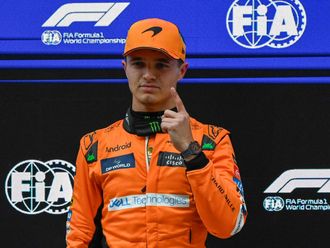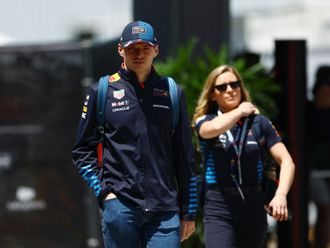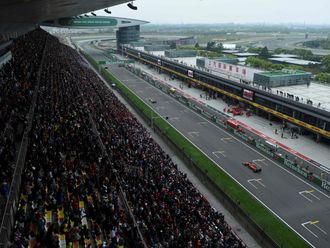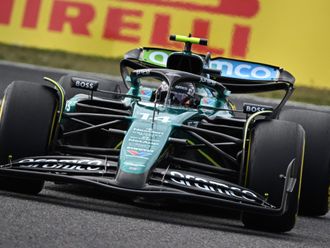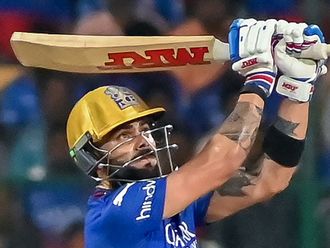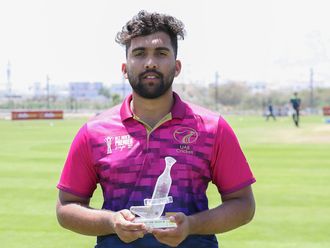
Brisbane: Jack Brabham, the three-time Formula One champion who famously pushed his car to the finish line to claim his first season title, died Monday at his Gold Coast home. He was 88.
The Australian driver - known as ‘Sir Jack’ in racing paddocks around the world after he was knighted in 1979 — won world titles in 1959 and 1960 and became the only F1 driver to win a world championship in a car of his own construction — the rear-engined BT19 — which he drove to the title in 1966.
The following year the Brabham team won its second successive world championship when New Zealander Denny Hulme drove the BT20 to victory. Brabham won his final Grand Prix race in South Africa in 1970 before retiring from F1 at the age of 44.
Brabham continued to compete at different venues after his F1 retirement and his three sons, Geoff, Gary and David also had professional racing careers.
“It’s a very sad day for all of us,” Brabham’s youngest son, David, said in a statement. “He lived an incredible life, achieving more than anyone would ever dream of and he will continue to live on through the astounding legacy he leaves behind.”
The family said Brabham was a brilliant engineer, and technological innovations developed by the Brabham team helped to shape F1.
In March 2009, David Brabham helped celebrate a 50-year anniversary for his father. Sebring International Raceway in Florida was the venue where Jack Brabham wrapped up his first Formula 1 championship on December 12, 1959, pushing his Cooper-Climax T51 across the finish line for a fourth-place finish.
“I was leading the race right up to the last 500 yards and the car ran out of petrol,” Brabham said in an interview at his home on the Gold Coast, Queensland state, in 2009. “I coasted to about 50 yards away and I pushed the car over the line. If I would have received any assistance I would have been disqualified. I managed to finish fourth, which was enough to win the championship.”
That race was won by Brabham’s close friend, business associate and race-car designer Bruce McLaren of New Zealand.
Brabham was not well enough to make the Sebring trip in 2009, but David re-enacted his father’s famous finish and also drove a handful of laps in the same car in which his father won that 1959 championship.
Jack Brabham’s career accomplishments were lengthy. In addition to his three world titles and 126 races from 1955 to 1970, he won the constructors’ championship in 1966 and 1967. He had 14 Grand Prix wins, won 13 pole positions, had 10 second-place finishes and seven in third, giving him 31 podium finishes in his career.
Australian Grand Prix chairman Ron Walker said Brabham did a lot to develop Formula One racing, “was a great Australian ... and I am sad to learn of his passing.”
Born on April 2, 1926, in the southern Sydney suburb of Hurstville, John Arthur Brabham grew up driving and maintaining his father’s fruit and vegetable delivery vehicles. After a brief career in engineering, he joined the Australian Air Force as a flight mechanic and later set up his own engineering works in Sydney and became a pilot.
He won four Australian championships between 1948 and 1951. In 1955, Brabham moved to England and teamed up with John and Charles Cooper to make his Grand Prix debut at Aintree, England.
He returned to Australia after he retired and his new interests included developing a farm, car dealership and aviation company. He was also a spokesman for a major Japanese automaker and maintained his interest in the sport, visiting numerous major international races.
“On track he was always the toughest of tough competitors, tough sometimes to the point at which I’d wonder ‘how could such a nice bloke out of a car grow such horns and a tail inside one’!” British great Stirling Moss wrote about Brabham in the introduction to a book about one of his biggest race rivals.
“If you ever raced against Jack you’d really know you’d been in a race ... [he] played the game as if your life depends on it, no quarter asked, and absolutely none given. To his natural driving ability he added a deeper technical understanding.”
“That was a reasonable comment,” Brabham said, smiling, when he read the excerpt.
Later in life, Brabham suffered from poor hearing and macular degeneration that prevented him from reading road signs, making driving difficult.
He said a kidney illness “really clipped my wings,” but he lived a busy life in a home overlooking the eighth hole of a resort golf course and sprinkled with mementos of his feats. Those included a glass-encased model replica of the Cooper Climax that he pushed over that Sebring finish line, and photos of the great driver with prime ministers, sporting personalities and fellow competitors.
“The big aim now is to go out without an enemy in the world — I’m going to outlive,” them he said in the 2009 interview.
He is survived by his second wife, Margaret, and his three sons.


